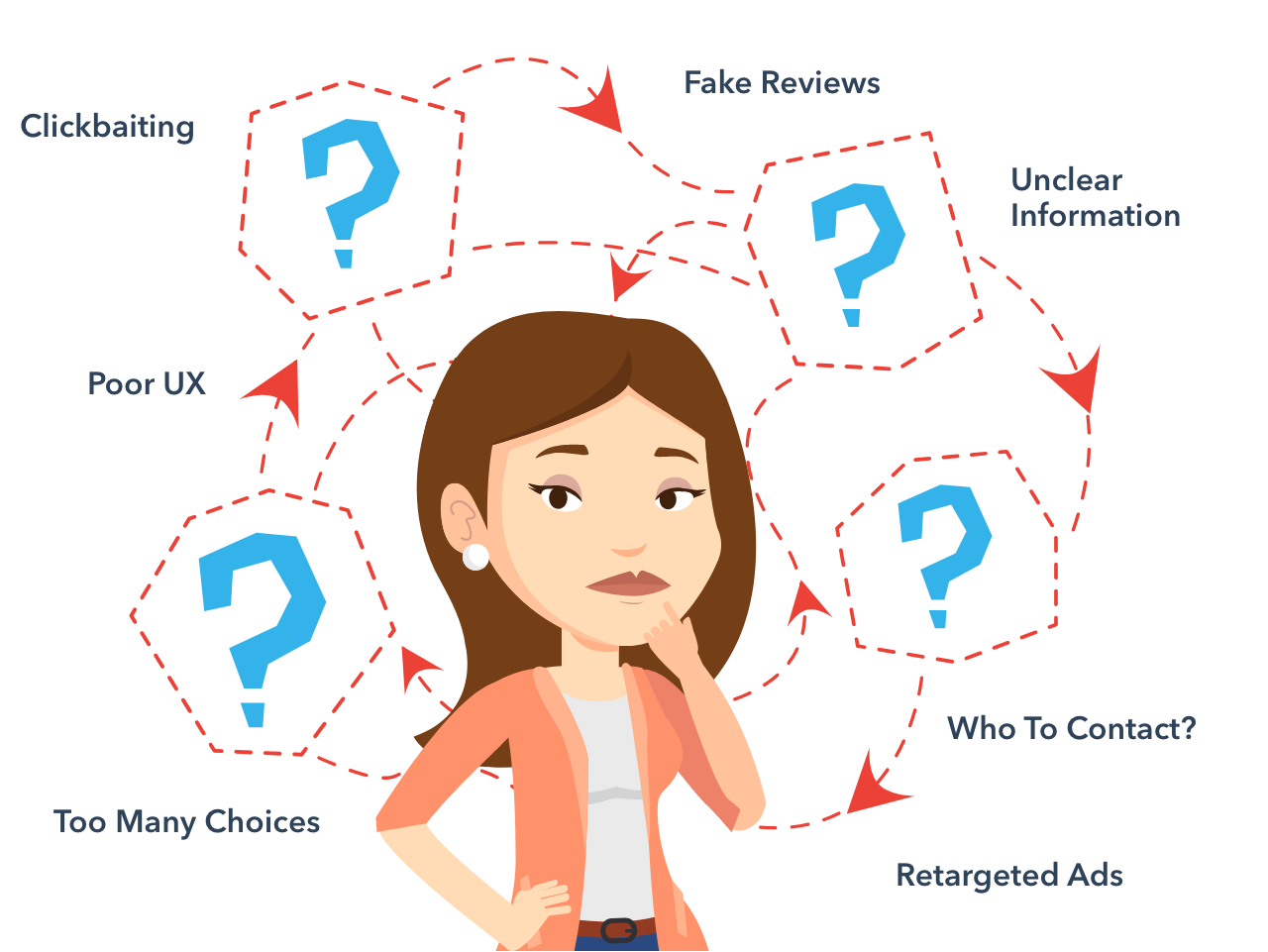By now you’ve probably seen the 2010 Starbucks customer journey map that popularized the concept of outlining how your customers think and act when it comes to your brand. But if it’s 9 years later and you still haven’t journey mapped, you’re not alone. Journey mapping, like user research, is a must-use tool in every leader’s toolbox—but is rarely taken out and used.
The excuses are abundant—Our team is too busy, we’re distributed so it’s too expensive to bring everyone together, we don’t have anyone to lead it. But digital transformation doesn’t wait for time, availability, or the right person. It happens no matter what.
So ask yourself:
If not now, when?
If not you, who?
Not sure how to get started? We’ll break it down for you.
If you’re not familiar with Journey Mapping, this Journey Mapping 101 from World Research leader Nielsen Norman Group will get you up to speed.
WHAT VALUE DOES JOURNEY MAPPING PROVIDE?
Let’s first remind ourselves WHY journey mapping has been a critical change-driving tool and how a small investment in time can pay off exponentially in revenue and operations improvements.
People today lead busy lives, interacting with many different physical and digital entities throughout the day. Chances are that you understand your customers—but what if you looked at the larger picture? Would you see something you hadn’t thought of that could make a new project even more useful and valuable to them?
For businesses trying to build applications and products that serve audiences’ needs, understanding motivations—and creating new offerings that align with those desires–isn’t easy.
Journey mapping is THE essential first step to visualizing the possibilities and your desired end state. It often defines a vision that is farther reaching—and more valuable—than you previously thought.
Journey mapping helps you and your team:
- Create an end-to-end view of your audience’s needs
- Map all actions and brand touchpoints
- Visualize your products in their daily lives
- Set attainable business goals that your offering can achieve
- Build consensus and empathy with both the customer and other stakeholders within your organization
SIX KEYS TO A SUCCESSFUL JOURNEY MAP
Once you’ve made the decision to journey map, include the following six elements to ensure the exercise is successful.
- Include representatives from every area of your organization. Your marketing, sales, customer support, and customer success teams will all have different views of your users—and they’re all right to some degree. A successful journey mapping exercise is inclusive of all voices within your organization to paint a full, end-to-end picture of what motivates and engages your users.
- Make sure everyone involved has vision. Those involved in your journey mapping exercise can disagree—but everyone has to have optimism, passion, and enthusiasm about the project at hand. Inspect all sides of an issue, but keep blockers and naysayers from the room.
- Ensure you have a facilitator to guide you. Bringing in a partner to act as a facilitator during the journey mapping process provides true value. You might think you know your customers, but a digital industry expert can provide prospective that your organization doesn’t have—or won’t hear from internal stakeholders. It can also help you take your vision to the next level.
- Document your journey maps. We can’t tell you how many times we see clients go through a journey mapping exercise, take a picture of the whiteboard, and then … nothing. The journey map is never documented, never referenced, and there is no focus on how to use this knowledge to move forward. This is often because there isn’t a facilitator leading the charge.
- Focus on actionable outcomes and assign leaders to bring opportunities to life. If you’re going to spend critical time (and company dollars) journey mapping, there needs to be actionable outcomes associated with the process. A facilitator will help drive and connect that process, ensuring that your journey maps are then used to spur new projects and offerings.
- Repeat, repeat, repeat.Journey mapping is not a one-and-done process. Your industry, users’ needs, and available technology always change. You must continue to journey map to make sure you’re still meeting users where they are. Journey mapping also tends to expose new questions and scenarios. Building additional journey maps based on those findings can help you locate and fill gaps you didn’t even realize existed.
Life is complicated!
Journey mapping helps you visualize your complex and ever-changing users to create attainable goals that have specific business value.
Ready to start your own journey mapping process?
We can guide you—and make sure you use what you learn to create a website, mobile app, or digital experience that matters to your customers. Fill out the form below and we’ll be in touch ASAP.





